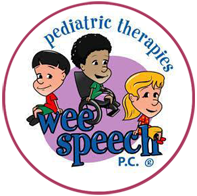November is the perfect time to practice gratitude, and it can also be a fun way to build your child’s communication skills. Whether your child is using words, gestures, or an AAC device, here are five simple ways to make “thank you” part of everyday life:
- Pick a daily “thankful moment.” Choose one time each day such as snack time, bedtime, or car rides to pause and share something you’re thankful for. Kids learn through routine and repetition.
- Keep “thank you” easy to access. For AAC users, make sure words or phrases like thank you, thanks, happy, thankful are on their device. For kids without AAC, keep visuals such as pictures of family, friends, or their favorite things to help spark ideas of what they are thankful for.
- Model gratitude in simple ways. Show your child how it’s done: “Thank you for the juice,” “I’m thankful for Mommy/Daddy,” “Thank you for helping me.” When you model it, they see how it’s used in real life.
- Create opportunities to practice. Give them chances to use “thank you” naturally. Hand them something so they can say thank you, have them give a toy to a sibling, or practice “thanks” when someone shares. Be sure to celebrate all attempts to communicate “thank you” whether that is through words, gestures, or selection on AAC.
- Expand naturally. As your child grows, add more detail: “Thank you, Mom/Dad, for reading,” or “I’m thankful for my truck.” For AAC, model phrases: thank you + person/item so they can expand their language skills.
Get a Free Online Assessment
Looking for an expert opinion on your child's needs? Fill out a 3 minute questionnaire and receive a personal evaluation from our staff




